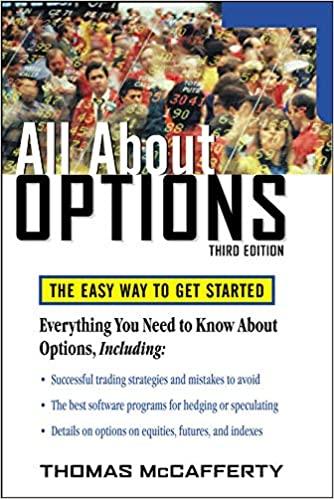Question
Overview the current client situation and discussion on the goal and objective for the financial planning process. Case Study Information Aleida Diaz has been referred
Overview the current client situation and discussion on the goal and objective for the financial planning process.
Case Study Information
Aleida Diaz has been referred to you by a mutual friend as she needs some assistance to sort out her investments outside of her superannuation. During your initial meeting, Aleida provides you with the following information about her current personal situation and financial position.
Aleida turned 37 years old in November 2021. Aleida is enjoying her single life and has no family to support financially. She is also not looking for a serious relationship at this point in her life and wants to set things up to ensure she is financial independent. Although COVID has caused some issues with how she works, Aleidas employment is secure and she currently earns a good salary of $124,000 plus employer superannuation guarantee contributions working as a marketing manager.
She owns and lives in a townhouse in Shalvey. She purchased this property in 2013 for $290,000. Aleida believes the property is worth approximately $660,000 today as one of the neighbours sold their unit in January for that price. There is a mortgage on the property of $127,000. Aleida has her personal contents insured with GIO, with cover in place for $62,000. The building is insured through the strata.
Before he died in 2021, Aleidas father gifted her his 2002 Holden Calais, which he said, was a great investment. The last time Aleida got the car valued, she was told it was worth somewhere between $15,000 and $17,000. Although she rarely uses the car she keeps it in the garage in memory of her late father. It costs her $2500 a year in insurance fees and $3000 annually for maintenance and registration. Aleidas daily use car is a 2-year-old Toyota Corolla, which is insured comprehensively for $28,000.
Aleida is quite worried about debt although she has a credit card with a balance of $28,000 and a limit of $29,000. Aleida is keen to get rid of this debt but does not have a plan on how to pay this off.
She knows her annual living expenses (including costs listed above) add to a total of $65,000. She knows she has $4,600 of tax-deductible expenses each year. She completed her own tax return yearly through MyGov.
One of the main reasons that Aleida is seeking advice from you is that her last surviving family member, her sister, recently passed away and as Aleida was the sole beneficiary she will inherit substantial funds from her sisters estate. Aleida expects to be receiving
$350,000 after all the estate expenses are accounted for and has been told the funds will be available in June 2022. Aleida is not sure what to do with these funds when she gets them. She has been considering an investment property but is not sure if that is an appropriate investment option as she has read recently that property prices have been falling in Sydney.
Aleida keeps about $2,000 in her everyday bank account so there is cash available if needed.
Last year Aleida read about a new investment and although not really understanding it decided to have a go and invested. She has received a holding statement which shows she has 2,000 units in the Pengana Private Equity Trust. It says this investment is listed on the ASX with a stock code of PE1. She has not really had time to see how it has performed and is not really sure if it is a share or some other form of investment.
As Aleida is earning a good salary and can easily cover living expenses, she is not in need of additional income from investments. While not a top priority, Aleida would like to structure her investments to take advantage of any tax advantages that may be available.
You have completed a risk profile with Aleida and the result was that she is effectively a BALANCED investor. She wants a good return on her investments, but does not want to take a lot of risk. Your licensee has provided risk profile definitions, research and recommended asset allocations for three (3) different risk profiles which can be found below
- Conservative
- Balanced
- Growth
Step by Step Solution
There are 3 Steps involved in it
Step: 1

Get Instant Access to Expert-Tailored Solutions
See step-by-step solutions with expert insights and AI powered tools for academic success
Step: 2

Step: 3

Ace Your Homework with AI
Get the answers you need in no time with our AI-driven, step-by-step assistance
Get Started


